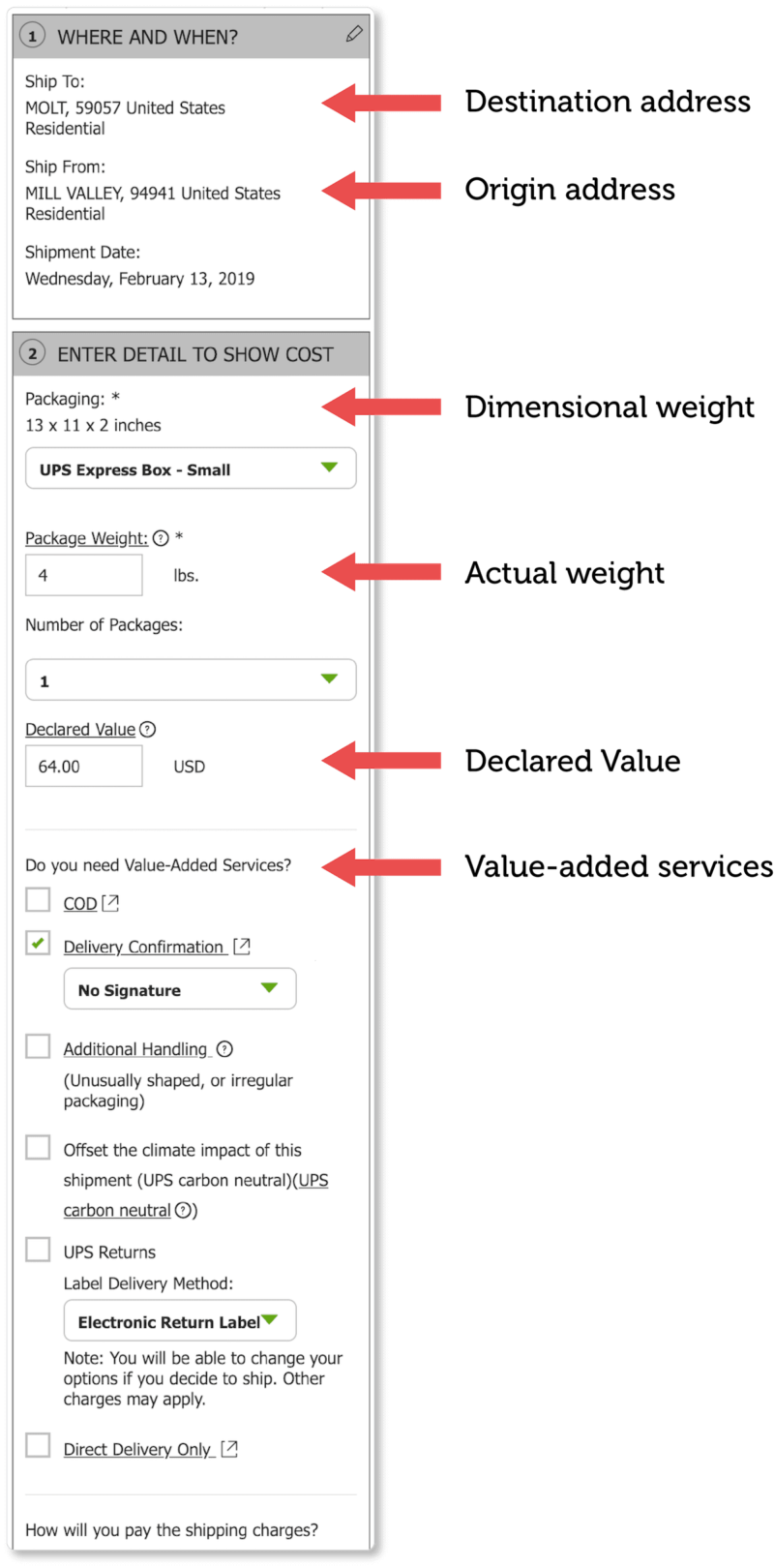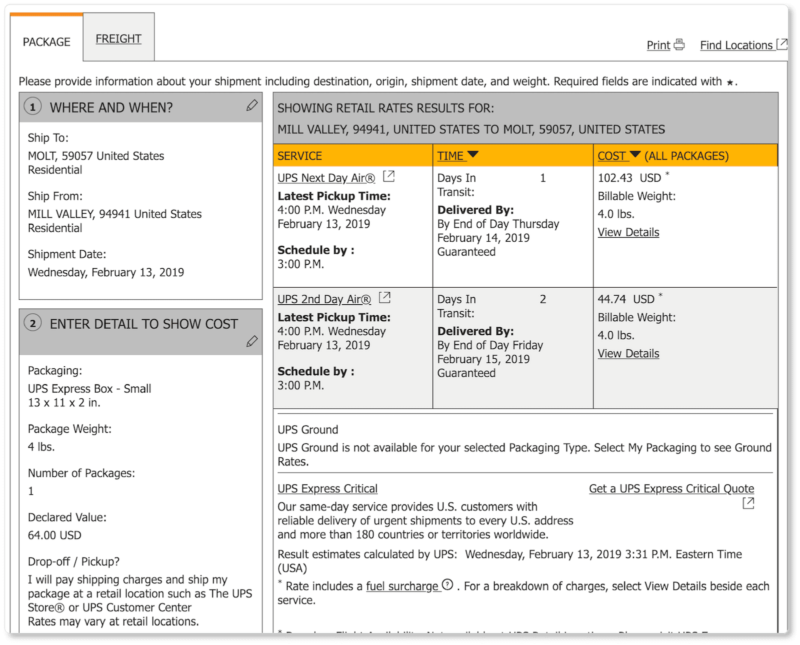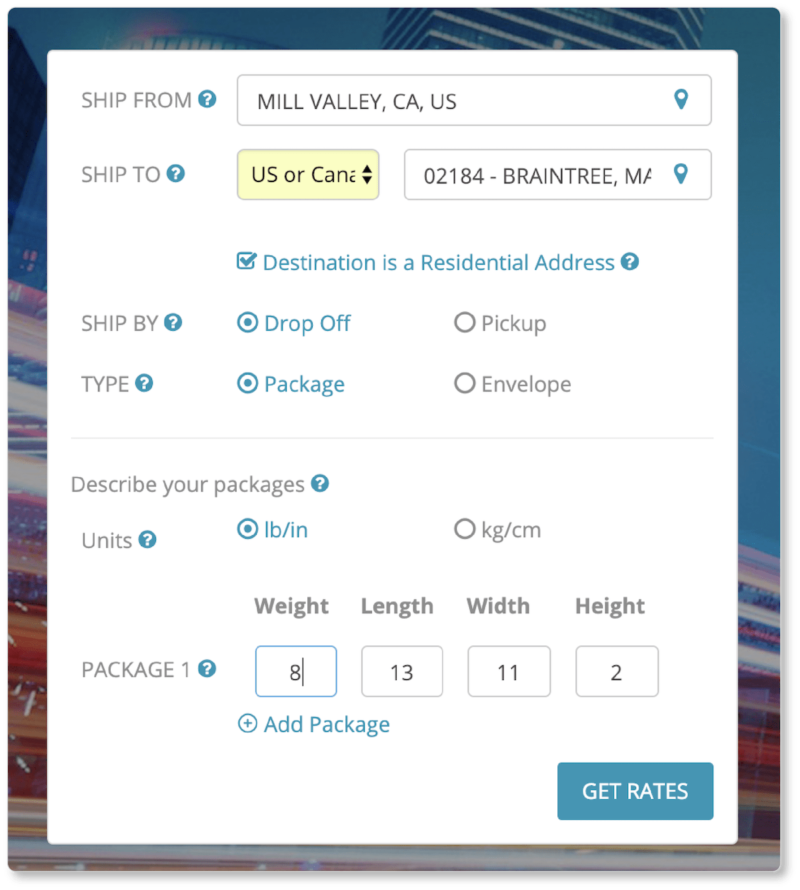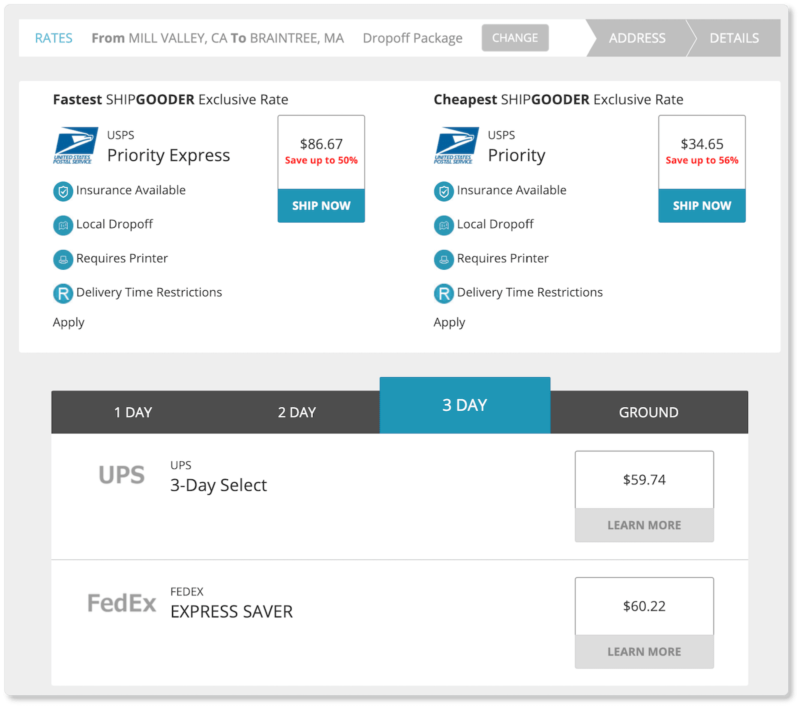- HOME
- Ecommerce
- Building Your Ecommerce Website
- Estimating Shipping Costs and Choosing a Carrier
Estimating Shipping Costs and Choosing a Carrier
- 8 Mins Read
- Posted on March 7, 2019
- Last Updated on October 8, 2024
- By Lauren
If you’ve been following along with us on our ecommerce journey, you’re well on your way to answering the questions that’ll get your products into your customers’ hands. You now know about the variety of strategies available for charging customers for shipping: from free shipping, to flat rates, to table-based shipping, to real-time shipping quotes, to whatever creative combination you arrive at—through data—that works best for your product and your customers. You also know about the variety of ways you can offset costs if you decide free shipping will be worth your customers’ loyalty. Because in the midst of all this, you can’t neglect your bottom line.
But now you’re probably asking the question that every online business must face early on: How do I choose theright carrier for my ecommerce store? After all, you know from the studies—not to mention from your experience as a consumer—how crucial it is to get your shipping prices and delivery strategies justright; and perhaps you’re feeling some anxiety around what feels like an overwhelming set of decisions. We understand: Shipping is your biggest expense, and it plays an enormous role in your customers’ perception of your brand—and ultimately, in their loyalty to you.
But when you’ve got the right data, choosing a shipping carrier doesn’t have to be an agonizing decision.
Below, we’ll walk you through the steps of estimating your shipping costs based on the factors every carrier will use to price your shipments. With a bit of work, you’ll discover that different carriers will be better for your products, your customers’ geographic locations, and the shipping options they’re asking for. With a combination of product-specific data and shipping calculators, you’ll choose a best carrier for you.
As you read, remember to keep in mind the three factors we mentioned in the previous section:
- Your customers (Where do they live? What’s their level of price-sensitivity?),
- Your product (How big/heavy/expensive is it? Do customers typically need it immediately or are they willing to wait for it?)
- Your competition (Are there industry standards? What’re your competitors’ strategies?)
The collective answers to these questions will play a big part in your carrier selection.
Factors that Determine Shipping Fees
There are a number of variables that go into determining shipping costs. You’ll need to understand how they work in order to properly estimate fees and choose the right carrier:
Package size and weight
In theory, these factors are the easiest to understand; and they’ll have the biggest impact on your costs. Package weight (also called “actual weight”) is exactly what it sounds like; and even a few-ounce difference can affect your bottom line when you’re shipping a lot of orders. However, carriers have also found a way to charge for large, lightweight items that take up precious real estate. It’s called “dimensional weight”; and it’s calculated by taking the volume of the package (L x W x H) and dividing it by a number determined by the carrier (FedEx’s divisor is 5,000; UPS’s are 139 and 166; USPS’s is 194). Most carriers charge the greater of the two rates: If your products are large but light, you’ll get charged based on the dimensional weight; if they’re small but heavy, you’ll get charged based on actual weight.
This means two things for you. First, because dimensional weight is based on package size, you’ll want to be careful about the packaging you choose: Choose boxes that are just big enough to hold your products and the packing materials that keep them safe; and be willing to play “package Tetris” on orders with multiple products if it looks like you’ll be getting charged dimensional weight. Second, for the most accurate actual weight of your products, package each product—packing material and all—before weighing it. (It wouldn’t hurt to invest in a scale for yourself!) After all, you’ll be putting these numbers into carriers’ calculators to get your price estimate, and they aren’t numbers you’ll want to be sloppy about.
Destination
Naturally, the further your product has to travel, the more costly shipping will be. Shipping carriers use “zones” (or postal codes) to determine rates; these zones fan out from the location you’re shipping from, such that rates increase as distance increases. So you’ll need to determine how far you’re willing to ship your products: Do you want to stay domestic, or do you want to open your shop to a global audience? Are you happy just shipping to a few regions for now? (You can use market research to determine demand in those regions.)
Pro tip: Keep track of your shipping destinations over time. This way, once you’re big enough to use a fulfillment warehouse, you can choose one closest to the majority of your customers, keeping your shipping costs as low as possible.
That said, we don’t only mean distance when we talk about destination. The characteristics of the destination also impact shipping costs: Delivering to a highrise in Miami and a farm in rural Montana are two different things. Will there be liftgate fees? Remote or extended area surcharges? Inside delivery fees? Residential delivery fees? Appointment delivery fees? Re-delivery fees? The answers to these questions all depend on the delivery location.
Additional costs
We’ve just named some of these, but there are others. Insurance and tracking first come to mind. Most carriers offer these at relatively low cost. UPS and USPS offer free coverage for up to $100; but if you’re shipping higher-value items, you’ll pay for additional coverage. You may choose to do this on a case-by-case basis, or—depending on the value and fragility of your products—for every shipment. You could also consider third-party insurance providers, such as ShipSurance.
If you’re shipping internationally, include customs fees and duties in your estimates. SimplyDuty and CustomsDutyFree offer duty and tax calculators worth playing with… though it’s the nature of the beast that you won’t know with absolute certainty what additional fees your products will be subject to in any given country. Be transparent with your customers about the fact that you can’t control additional customs and duties fees that may incur—ideally by stating it on your homepage and in your shipping policy.
Other possible costs include fuel surcharges, the price of signature confirmation upon delivery, package pickup… and of course, delivery speed. That’s a lot of factors, we know; but luckily, you’re not exactly expected to do all that math on your own. Which brings us to…
Carrier
The final factor is, of course, the shipping carrier. And now that you have the above information at hand—actual and dimensional weights of your products, a sense of where your target market lives and where you’ll be delivering, whether you’ll want insurance, and so on—it’s time to test various combinations to see which carrier/s will work best for you.
Choosing a Shipping Carrier for Your Ecommerce Store
“For you,” of course, is the key phrase in that above sentence. There is no “cheapest way to ship”; different carriers are simply better positioned to help different businesses. Many of them (UPS, USPS, FedEx, DHL, Canada Post, Australia Post, UK Royal Mail, and India Post) offer on-site shipping tables and calculators; but feel free to research beyond the big-name carriers. You may find reputable local carriers that can deliver your goods just as timely and safely, at lower cost.
In these calculators, enter your package details along with a variety of destination addresses (remembering that urban and rural addresses bring up different costs). For example, UPS—which is already integrated with Commerce Plus—asks for origin and destination addresses, actual and dimensional weight, declared value, and value-added services. This level of detail is valuable, because those additional costs can be considerable. If a carrier’s calculator doesn’t ask about additional services, contact them to find out about pickup rates, delivery confirmation fees, additional insurance costs, and so on: 
Once we’ve entered all our information, we’re given—in this case—two shipping options (Next Day Air and 2nd Day Air), at two very different prices:

Of course, different carriers will offer different options (economy, ground, standard, domestic/international express, same-day, next-day, 2nd-day, and so on); you’ll want to pass as many of these options as you see fit onto your customers. By entering in a variety of variables, you’ll start to notice patterns: USPS Priority Mail may be the best deal for a domestic 2-pound parcel; but UPS might be the best deal for a domestic 6-pound package. From there, you can start developing your shipping strategy… based on the data. Keep in mind, too, that no one is holding you to commit to a single carrier. There may be a “best carrier” for each of your products, or for each of your destinations.
To simplify this process, there are shipping comparison calculators available that tap into the major carriers’ calculators, sort the data, and find the most cost-effective options for you. ShipGooder, Online Shipping Calculator, and other comparison calculators are worth checking out. They’ll save you the grind of inputting information into individual carriers’ calculators… though we wouldn’t rely wholly on these, as they don’t ask about additional services. Here’s what ShipGooder’s interface looks like:


Use these third-party calculators as a starting place, choose the carrier that looks best, and then go into that carrier’s on-site shipping calculator for more accurate pricing. Estimates are a great start; but you’ll ultimately want to be as exact as possible. After all, your business is on the line with these numbers.
As a general rule, couriers like USPS and Canada Post are great options for smaller, flat, and/or lightweight packages; they’re also better for deliveries to residential locations. Private carriers, on the other hand (DHL, UPS, FedEx), have built their businesses around shipping larger and heavier packages with relative efficiency. Businesses shipping particularly large or heavy items might consider an LTL (Less Than Truckload) carrier. And regional carriers tend to be optimized for local delivery. U.S.-based examples of such carriers include OnTrac (which services the western United States) and LaserShip (which services the eastern United States). These “general rules”—along with those comparison calculators—should give you a sense of where to begin your research.
Setting Up a Business Account with Your Shipping Carrier
There’s one price factor we have yet to mention… and it’s one that’s actually beneficial for your margins! Once you’ve chosen the carriers you’ll use, we strongly suggest you set up business accounts with them. We can’t think of a major carrier that doesn’t provide such a program (they want your loyalty, after all); and you’ll get shipping discounts, expense tracking, order management, free shipping supplies, and more. You can learn more about what each of these business accounts entails at USPS, UPS, FedEx, DHL, UK Royal Mail, Canada Post, Australia Post, and India Post.
If, over time, you become a high-volume shipper, you may find ways to negotiate your rates down even further… so no matter how small you are now, keep that in mind as yet another benefit to business growth.
Finally, remember that no shipping decision is final. Check in after six months—and again after a year—to be sure you’re delivering the best possible service at the best possible price for both yourself and your customers. Shipping is a complex industry; and it may take some time to find the perfect pricing and shipping solutions. Like everything else in your business, be attentive and patient, and let the process evolve.
Your shipping rates and delivery strategies are in place; but now you’ll need to be transparent about these matters in a document on your website. In the next section, we’ll cover one of the major policies you’ll want to link to from the homepage of your ecommerce site: your shipping policy.